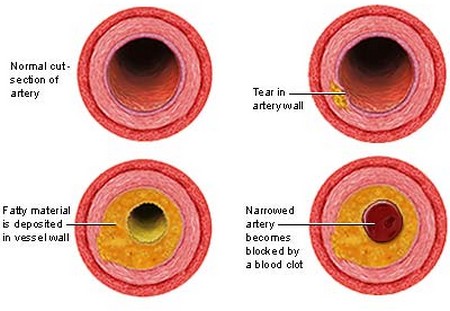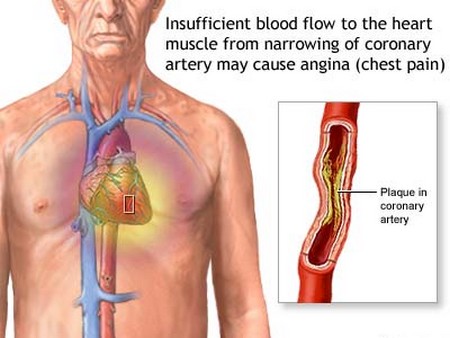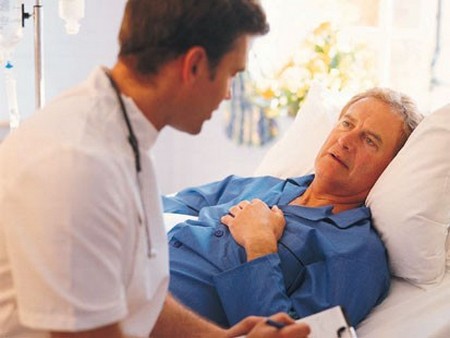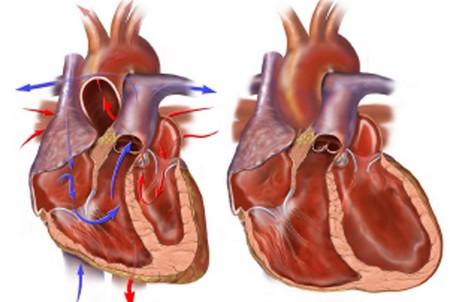The term ‘heart diseases’ genuinely refers to the diseases of the heart and the blood vessels system associated with the heart. Generally, more than 50 known types of heart diseases among which the most common disease is related to coronary artery disease. On various occasions the coronary artery disease is also referred to as heart disease.
Heart disease is a combined term used to refer to several different conditions, all of which are normally related to heart or blood vessel system. There is a possibility to see several conditions in single patient at a same time, making things difficult to diagnose for the doctors. Heart is a main organ that supplies blood to all other organs of the body. Naturally, if heart stops functioning properly, all the other organs will be affected.
Most of the time, the disease is classified on the basis of its effect on the components of heart. Heart has four chambers, i.e. two ventricles and two atria which include muscle, lining, an electrical system, valves, coronary arteries and veins.
Atherosclerosis
Atherosclerosis is considered as the major factor causing the cardiovascular disease. In this condition, fatty deposits are buildup within the walls of the arteries, restricting the flow of blood.
Eventually, the blocked arteries affect the heart, brain and other parts of the body. The symptoms of this disease begin to appear in the childhood. Due to the fatty deposits, the lining of the arteries becomes thickened, called plaque. Due to this fact, the ability of the arteries to expand and contract affected. There are chances that a clot of blood or plaque becomes stuck in any of the arteries, completely blocking the artery. Eventually, the body organs and tissues don’t get the adequate supply of oxygen and nutrients and the tissues begin to die. Heart attack can also occur in such situation. Stroke is also another possibility in case of clogged brain artery.
Angina
The narrowing of the arteries due to the atherosclerosis is known as coronary artery disease. There are no prominent symptoms for this disease, however in extreme conditions, the chest pain or angina pectoris can be a symptom of narrowed arteries. For the normal heart needs, narrowed arteries don’t harm much, but in certain conditions like physical exertion, excitement, exposure to cold or digestion of heavy meal, additional blood is required by the heart. In that case, angina pectoris may occur. You may feel pain under the breastbone or in neck or arms. Proper rest and medication can relieve the pain.
Heart Attack
Like any other body tissues, heart muscle also needs an adequate supply of blood to perform well. Due to the narrowed arteries, blood supply slows down and heart attack can be a result. Also, the parts of the heart which don’t receive ample supply of blood begin to die. This condition is normally known as myocardial infarction or M.I. The working of the heart is seriously affected by this myocardial infarction and heart attack would be a sudden reaction.
It is often observed that the symptoms of a heart attack can be mistaken for indigestion. Major indicators include a sense of fullness, uncomfortable pressure, squeezing, or pain in the center of the chest, along with pain in the arms and shoulders. Sweating, nausea, dizziness, shortness of breath, or fainting may also be linked to a heart attack. In the unfortunate event that tissues begin to die, they can disrupt normal electrical activity, leading to wild and twitching movements of the heart, a condition known as ventricular fibrillation. This greatly affects the pumping of the heart, and in such situations, immediate CPR is crucial. For more information on CPR and group discounts on certifications, you can visit https://cprcertificationnow.com/pages/group-discounts.
The only treatments available for heart attacks include physical therapy, drugs, and heart surgery. Once a person survives a heart attack, the healing process commence immediately with formation of scar tissues, which gradually replaces the dead heart muscles. Similarly, the small arteries bordering the damaged area enlarge to allow an adequate supply of blood to the heart and other parts of the body.
The process of recuperation largely depends on the damage suffered during the heart attack. Most of the people recover well enough to spend a normal life. It is important to avoid overwork, lack of rest, tension, worrying, excess weight, emotional episodes and smoking. The majority of people suffered from heart attack, learn to live a healthy life and never face a second heart attack.
Congestive Heart Failure:
The major factors causing congestive heart failure include the prolonged hypertension or high blood pressure, cardiovascular diseases and heart attack. What normally happens is the heart muscles lose the strength to circulate the blood normally through the body. The flow of the blood slows down and the body organs don’t get the adequate supply of blood and also the blood returning to the heart cause swelling due to the weak muscular functions. This can be prominent in the ankles and legs. The fluid begins to accumulate in lungs due to improper kidneys operations.
The patient of congestive heart failure requires ample rest, a drug therapy and a low salt diet. With these cautions, disease can be controlled and also replacing the defective heart valves can also help overcome this disease.



